#and that it inspired braque
Text
its such a hard life i lead i just want to watch aim for the ace with jelly but instead i have to study FOR 20TH CENTURY ART!!!!! IDGAF ABOUT 20TH CENTURY!!!!! TAKE ME BACK TO 19TH!!!!!!!!
#19th century art was the best art history class ive ever taken#it was so fun and easy to understand.... esp the early movements...#i like it because everything was laid out so plainly from baroque-romanticism#then we get into late 19th century and besides haussmannization ... i dont really care ......#impressionism + neo/post impressionism looks very pretty but im bad at analyzing it#like i can identify the movements when i see a piece but its still hard for meeee#<- guy who does not gaf about landscapes#i love portraits portraits are my bffsies#cubism is like. hard for me to think of as cool. because i hate picasso so much#i like girl with mandolin though i think that is a beautiful piece#and there were very creative ideas and executions!#its just sullied by the fact that i hate everyone involved#<- my old/favorite professor was really really about separating art from the artist#like she did NOT care about what the artists intent was the only thing she cared about was how the audience/herself viewed it#which is an interesting viewpoint that i dont necessarily agree with#mostly because i would hate for people to see my art and just completely ignore what *i* as the artist meant for it#anyway all this to say im about to mega super flop my midterm on wednesday and i want to explode#i dont understand the history behind cubism very well. like i can get that picasso was really into abstracting and flattening#and that it inspired braque#hmmm much to think about#jonesytag
2 notes
·
View notes
Photo
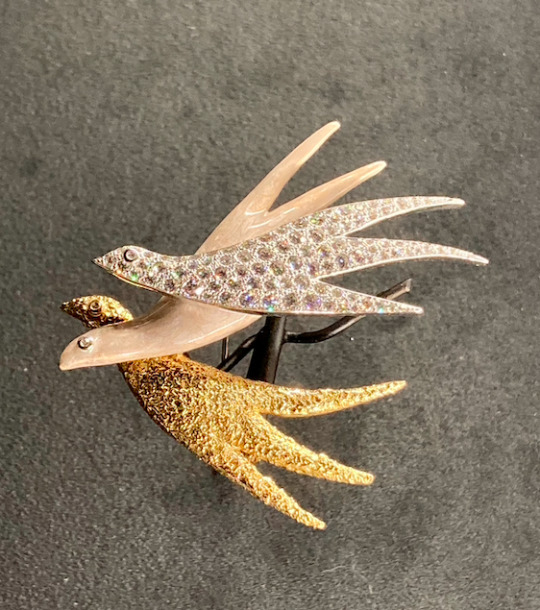
Broche "Les Trois Grâces" en collaboration avec Georges Braque en or, émail et diamants (circa 1972) à l'exposition "Fred Joaillier Créateur Depuis 1936" au Palais de Tokyo, octobre 2022.
10 notes
·
View notes
Photo
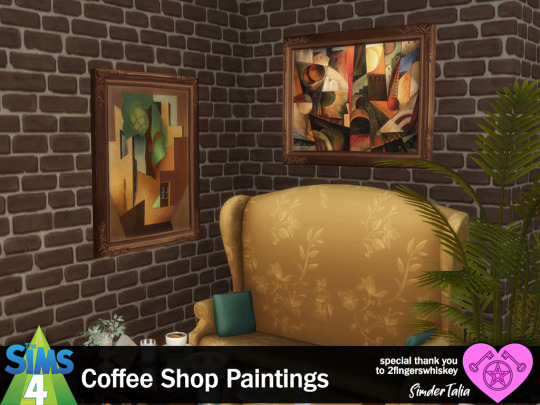

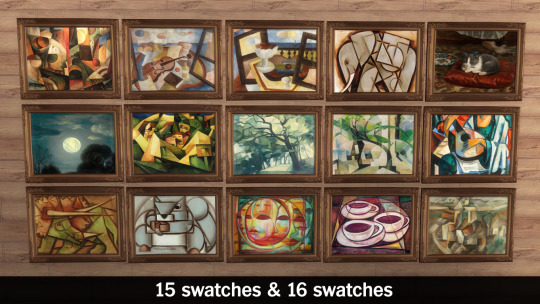
Coffee Shop Paintings
Sims 4, base game compatible. I want to credit & thank @2fingerswhiskey, who inspired these items with a post looking for more art in a kind of cubist/brutalist style, commonly seen in coffee shops in the 1990s. This paintings set features art by Maurice Louis Tête, Leopold Survage, Georges Braque, Albert Gleizes, Franz Marc, Pablo Picasso, Mary Swanzy, & Tommervik.
2 items: vertical painting & horizontal painting | 15 & 16 swatches | Found in wall art, 100 simoleons
To find quickly, type “coffee shop painting” into the search query in buy/build mode. If you’re like me and have a lot of CC in your game, an easy way to find things is to search for the title of the item you’re looking for.
📁 Download (SFS, No Ads): https://simfileshare.net/folder/178391/
📁 Alt Download (still no ads): https://mega.nz/folder/sooWUTgY#M-bEI6mlkk6Dy7-3grFxQg
As always, please let me know if you have any issues! Happy Simming!
~I take no credit for the images used in my recolors. All credit goes to the artist(s). Thank you to 2fingerswhiskey for inspiring this paintings set.~
✨ All of my CC has always been free & public upon posting, but if you like my work, please consider supporting me:
★ Patreon 🎉 ❤️ |★ Ko-Fi ☕️ ❤️
★ Instagram 📷
Thank you for reblogging ❤️ ❤️ ❤️
@sssvitlanz @maxismatchccworld @mmoutfitters @public-ccfinds @coffee-cc-finds @itsjessicaccfinds
#sims 4 cc#ts4cc#sims 4 painting#sims 4 coffee shop#sims 4 brutalist#sims 4 cubist#sims 4 buy mode#sims 4 wall decor#sims 4 art#sims 4 90s#sims 4 1990s#sims 4 familiar#sims 4 wolf#sims 4 dinosaur#sims 4 deer#sims 4 squirrel#sims 4 elephant#sims 4 art museum#simdertalia
298 notes
·
View notes
Text
Johannes Bjerg, 'Abyssinian' 1914/15

Johannes C. Bjerg, 1886/1955, having received a scholarship arrived in Paris in 1911, meeting the cubist group Section d'Or, he moved to the Bateau-Lavoir of Pablo Picasso and Juan Gris.
Their neighbor was the Spanish sculptor Auguste Agero 1880/1946 whose influence would be decisive for Bjerg.

In his studio “modern” sculpture and African artifacts coexist, discovering a new range of models and motifs.
It was naturally at Agero that Johannes Bjerg met the young Ethiopian model who posed for the Abyssinian (Abyssinia being the old name of Ethiopia).

Bjerg was enthusiastic about this boy and made several variations of it.

The model's slim and slender figure inspired other artists such as the Russian Alexander Archipenko, 1887/1964, Roter Tanz (Danse Rouge, or Blue Dancer) 1912/13

German Georg Kolbe, 1877/1947, ballerino, 1914
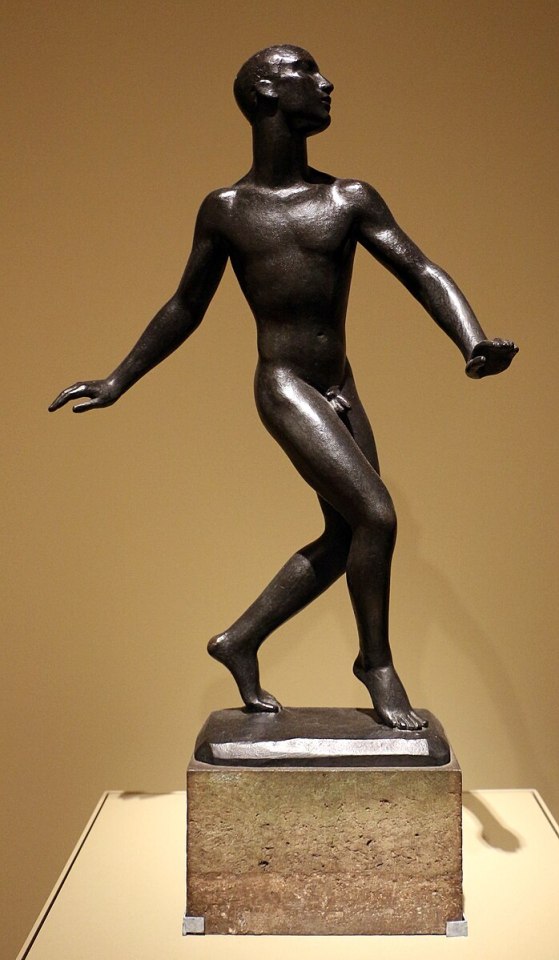
And Bjerg's compatriot, Svend Rathsack, 1885/1941, Ung mand med falk, 1914/17

With his slender body we can say that this young man actively participated in the artists' craze for the African figure and if we do not know the identity of the model, at least the poses he takes are unequivocally the attitudes of 'a dancer.
The first “negro” dance was introduced to Paris by Gabriel Astruc at the Nouveau Cirque in 1903: it was in fact the cake walk inspired by American minstrel shows.
In 1925, Josephine Baker had a triumph with the “Revue Négre”
“Negro art? Don’t know,” Picasso (1881-1973) asserted in 1920, yet with his whole gang, Braque, Matisse, Derain, they discovered, with astonishment, this unprecedented art which distorts and recomposes what their eye, in an innate way, is accustomed to seeing.

Pablo Picasso in the Bateau-Lavoir workshop, in 1908
15 notes
·
View notes
Text
5 most popular art styles you must know about
1)Abstract

Abstract art, born in the early 20th century, focuses on conveying emotions and ideas through shapes, colours and forms. Abstract art does not focus on painting the exact picture but rather one that is detached from realistic depictions. The famous Russian artist, Wassily Kandinsky embraced this style and used vibrant hues and geometric shapes to express inner realities.
Abstract art focuses on telling a story through imagination rather than exact words and figures
2)Modern

Modern art period was from the 1860s to the 1970s and marked a period of artistic styles that were separate and different from past traditions. Artists explored new perspectives and experimented with styles and techniques through which they wanted to redefine art’s purpose. Kind of similar to Abstract style, modern art too parted away from storytelling and believed in ‘less is more’. Influential painters like Vincent van Gogh, Paul Cézanne, Paul Gauguin etc were the pioneers of the style.
3) Pop art

The Pop Art movement came in during the 1950s and was a celebration of popular culture and consumerism through vibrant colors and everyday objects. Andy Warhol, an iconic figure in Pop Art, created famous pieces such as ‘Campbell's Soup Cans’ and ‘Marilyn Diptych’ using mass-produced imagery to challenge conventional and traditional art notions.
4) Cubism

Cubism came as a revolutionary art form in the early 20th century. It transformed European art and with time inspired music, literature and architecture. Cubism, instead of showing objects from one viewpoint, breaks them down and reassembles them in abstract forms, offering multiple perspectives to depict subjects within a broader context. Widely regarded as the most influential 20th-century art movement, Cubism was led by Pablo Picasso and Georges Braque.
5) Surrealism

Surrealism as an art form emerged post-World War I, depicting illogical scenes to express the unconscious mind. Led by Andre Breton, it aimed to blend dreams with reality, creating ‘surreality’ as many put it. Artists used surprise and odd combinations in paintings, writing and film. While focusing on bizarre imagery, many Surrealists prioritized expressing philosophical ideas, considering their art as a result of surreal experimentation rather than the central focus of their movement.
By,
Ritika Rajpal
#top artists#traditional art#bookworm#digital painting#painting#literature#original art#artwork#books#design
10 notes
·
View notes
Text


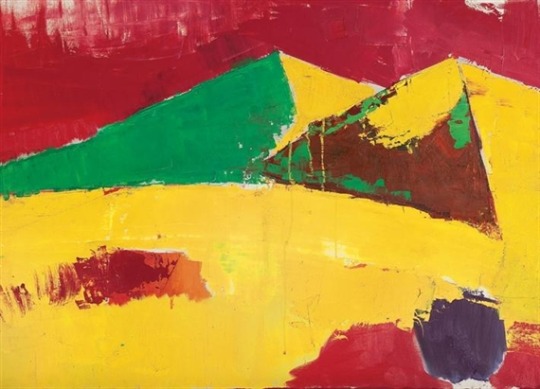
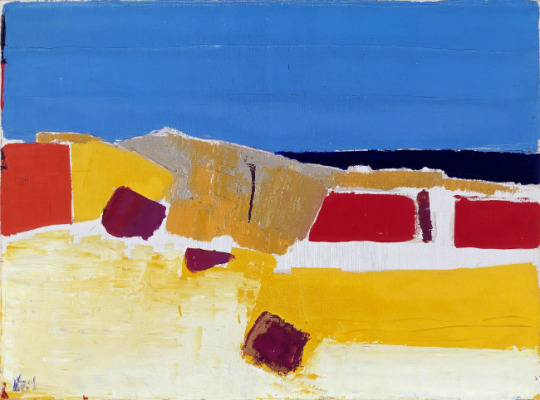
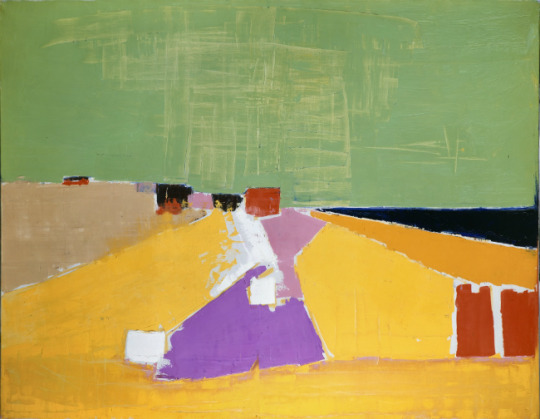
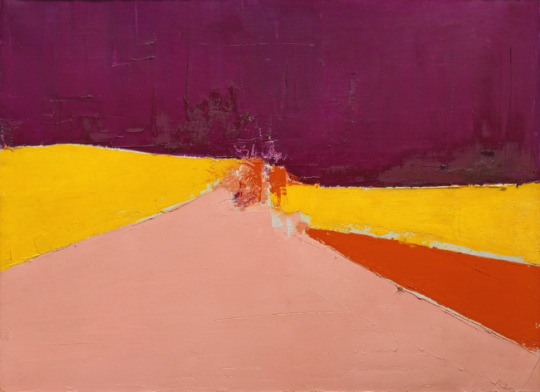

In 1953, when artist Nicolas de Stael (1914 - 1955) set up his atelier in Ménerbes, inside a stone house at the edge of a bluff, the fortified village was still an unknown sleepy hamlet. Fueled by a new amorous passion and deeply inspired by the verdant landscape of Provence, de Staël produced 254 paintings in only fifteen months.
During this same period, De Staël also embarked on a voyage to Sicily with Jeanne Polge, his mistress, with whom he had passionate ill-fated 6-month love affair. Italy’s sweeping sunlit views infused the artist’s palette with a new luminosity, inspiring a relentless output of new works.
Then, fifteen months later, the artist took his own life throwing himself headfirst off the roof of his rented apartment on the ramparts of Antibes at age 41.
*** Born in St Petersburg, Nicolas de Staël fled to Poland with his family in 1919. After his parents’ death, he lived in Brussels before leaving for Paris to study painting. He admired Braque and Kandinsky and befriended the poet René Char, who was a neighbor in Ménerbes, as was another of his friends, Dora Maar. Although de Staël belonged to no particular school of painters and his relatively short career only lasted 19 years, he is widely recognized today– which was not the case during his lifetime.
https://francetoday.com/.../nicolas-de-stael-in-provence/
28 notes
·
View notes
Text
J'ai parlé du date à mes potes du lycée et elles m'ont dit que c'était très très rapide et que ça leur faisait peur. J'avais déjà conscience de tout ce qu'elles m'ont dit mais leur point de vue était quand-même intéressant. Sauf que ma meilleure pote s'est telleeement braquée, comme d'hab, et m'a sorti de manière super cash les choses. Ça m'a TROP énervé putain mais j'ai réussi à garder mon calme. Parce que j'avais vraiment envie qu'elle comprenne mon point de vue et qu'on s'entende. Mais encore une fois avec son ego de merde elle m'a juste sorti "Bah fais ce que tu veux alors". Alors que j'ai toujours pris en compte ce qu'elle m'a dit et qu'à chaque fois que j'étais d'accord avec ce qu'elle disait, je le lui disais. Parce que je SAIS qu'elle a raison pour certains trucs mais pas tout et c'est normal on peut pas être d'accord sur tout mais elle s'entête à essayer de me convaincre. C'est juste impossible de parler avec elle, je parle vraiment à un mur. Quand tu nuances ses propos pcq t'es pas totalement d'accord, elle se braque, elle veut absolument rien entendre. Elle te dira jamais "à ce niveau là je comprends", elle répondra juste plus à ce sujet. Mais comment je ne SUPPORTE PAS ça.
Puis je m'en fous qu'on soit honnête, j'ai ENVIE qu'on le soit. Mais c'est sa manière de dire les choses. Je me suis sentie infantilisée et à chaque fois j'ai l'impression qu'elle me sous-estime et qu'elle ne voit pas que j'ai évolué à pleins de niveaux. Je lui ai dit pleins de fois que j'avais conscience d'être quelqu'un de naïf qui veut un peu trop croire en l'humain mais je suis pas complètement conne non plus. J'en ai vécu des histoires de merde et je sais un minimum apprendre de mes erreurs. Ok sur le moment je suis naïve mais j'estime que j'arrive quand-même à bien remettre les choses en question quand-même?? Et je prends TOUT LE TEMPS en compte ce qu'on me dit.
Et le pire c'est que j'ai même pas dit qu'il était addicte à la beuh ptdrrr. Elle s'est emportée quand je lui ai dit qu'il avait du mal à être seul et qu'il avait besoin d'être en couple. Ce qui est certes un redflag mais on peut en parler, voir les raisons, et en fonction de ça on voit.
VOILA J'AI ENVIE DE PÉTER UN CABLE MAIS ÇA VA TOUT VA BIEN INSPIRE EXPIRE
(08/06/2024)
14 notes
·
View notes
Text
Findings your personality based on your own paintings

Art is the expression of human creative skill based on own imagination, emotions or inspiration of something. typically in a paintings tend to use emotions and feelings to paint something, such as abstract, realism, pop art, and cubism. The types of paintings certainly have different application techniques and different types of paint. So the result can produce different painting characters, this difference has to do with your own personality such as how you express your emotion in a color. Dark colors are identical with deep meaningful paintings, while bright colors are identical with cheerful and happy emotional expressions. But brightly colored paintings are not always supposed to be happy, some famous painters like Vincent van Gogh who has schizophrenia and is diagnosed have influenced his paintings. Your paintings can be analyzed by matching your paintings with existing types of paintings.
Abstract

If you have a style of art that is highly expressive, subjective, and non-representational you might have an abstract art style, people like you are deeply creative and insightful, abstract art is all about the expression of representation of your soul through colors, patterns, and lines. People like you are often brave and not afraid to try new things, always open to new experiences and ideas.
Realism

The second type is realism, according to several studies, people who love Realism art are very outgoing and honest. Since you see the word as it is, you tend to be straightforward when dealing with certain matters. Realists were likely to be methodical, agreeable, and responsible.
Pop art

Pop art is the art style from the United Kingdom and the United States during the mid-to late-1950s. Using bold colors and flat compositions to present art that could almost double as commercial ads. This art style is used in comics, posters, food commercials, and others. Pop art lovers like you are fun, loving, excellent to be around, extroverted, and daring to be different.
Cubism

Cubism is an art style of the 20th century that was created by Pablo Picasso and Georges Braque in Paris between 1907 and 1914. The Cubist style has a two-dimensional surface of the picture plane. The application of multiple perspectives to show different aspects of the same subject. People who have this art style tend to think critically, are not easy to guess, and have a different view from others.
Do you agree with this result? At some point, personality can be seen from the MBTI personality test, but if you are an artistic person or like to paint you can try a personality test based on your art style.
2 notes
·
View notes
Text

Françoise Gilot, the accomplished painter whose art was eclipsed by her relationship with Pablo Picasso, has died at 101.
She made celebrated paintings exhibited at the Met and MoMA, and wrote a best-selling account of her years with Picasso. By Harrison Smith
The Washington Post: Françoise Gilot had just finished dinner at Le Catalan, a Left Bank bistro in Paris, when Pablo Picasso approached her table with a bowl of cherries. He was 61, a master artist who had already reinvented himself several times over. She was 21 and, like the friend accompanying her that night in May 1943, starting out as a painter.
“That’s the funniest thing I’ve heard all day,” Picasso told the two elegant young women upon learning they were artists. “Girls who look like that can’t be painters.”
In fact, Gilot’s work had just appeared in an exhibition for the first time; one of her canvases was a veiled swipe at the city’s Nazi occupiers, showing a taxidermied hawk with the Eiffel Tower rising in the background.
She would continue to paint through the tumultuous years that followed, as she became Picasso’s mistress, model and muse, the mother of two of his children and, by his account, the only woman who ever left him.
Ms. Gilot, who was 101 when she died June 6 at a hospital in Manhattan, achieved a distinguished career as a painter, with her work shown at the Metropolitan Museum of Art, Museum of Modern Art and Centre Pompidou in Paris.
She also published graceful, incisive memoirs and poetry collections, even as she spent decades battling with those who sought to define her by the men in her life, including Picasso, her friend Henri Matisse and her second husband, American virologist Jonas Salk, who helped eradicate polio.
Those men certainly influenced and inspired her, Ms. Gilot said. But there was no reason to view her as a supporting figure rather than a leading one. “Lions mate with lions,” she told Mirabella magazine. “They don’t mate with mice.”
The only child of a wealthy agronomist, Françoise Gilot was born in the Paris suburb of Neuilly-sur-Seine on Nov. 26, 1921. As a child, she borrowed paintbrushes from her mother, a homemaker who worked with watercolors and ceramics. Her father, who pined for a son and dressed Ms. Gilot in boys’ clothing, pushed her toward international law.
Gilot graduated from the Sorbonne at 17, in 1938, with a bachelor’s degree in philosophy. She was studying law when the Germans invaded France in 1940. “After that,” she told TV interviewer Charlie Rose, “I thought, ‘Well, you know, I don’t know how long we will remain alive. So I’m going to do what I want.’ ”
She dropped out of law school at the Sorbonne, an event that marked the beginning of a years-long estrangement with her father, and was studying at the Académie Julian art school when she began visiting Picasso’s studio in 1943 after their initial encounter at the bistro.
By then, Picasso had separated from his first wife, Russian dancer Olga Khokhlova, and taken up with photographer Dora Maar. He soon abandoned her for Ms. Gilot.
Their relationship, she wrote in a best-selling memoir, “Life With Picasso” (1964), was “a catastrophe I didn’t want to avoid” — a passionate romance that was intellectually and artistically fulfilling but marred by episodes of physical and emotional abuse.
The couple lived together for nearly a decade, spending much of their time at a Riviera villa known as La Galloise, where Picasso introduced Ms. Gilot to friends including the existentialist philosophers Jean-Paul Sartre and Simone de Beauvoir, the filmmaker and artist Jean Cocteau, and the painters Georges Braque and Matisse.
The latter “acted like a visa on my passport to the realm of art,” Ms. Gilot said. Picasso incorporated Gilot and their two children, Claude and Paloma, into sculptures, paintings, ceramics and lithographs. But Gilot’s own work drew more from Matisse, whose brightly colored, emotionally reserved style she preferred over Picasso’s expressionistic technique.
When their work was exhibited together in 2012 at the Gagosian Gallery in Manhattan, Picasso biographer John Richardson declared that “Picasso took from her rather more than she took from him.”
Reviewing her 1965 solo exhibition at the Findlay Gallery in Manhattan, New York Times art critic Stuart Preston wrote that Ms. Gilot “is an artist very much in her own right …
"Without any self-indulgent interest in sensuous or ‘interesting’ textures, she has a feeling for the quality of paint itself and for the mysteriously effective relationship of color and shape that lends her paintings, large and small, a genuinely authoritative air.”
In 1970, she married Salk, perhaps the most famous physician in the world for his work on polio two decades earlier. He was running a lab in San Diego when a mutual friend introduced him to Ms. Gilot.
Salk knew next to nothing about painting; she knew little of science. The couple remained together until his death in 1995.
Gilot eventually sold all the Picasso works she owned, including “La Femme-Fleur,” because of the “bad luck” that seemed to trail him — including the suicides of his mistress Marie-Thérèse Walter, his wife Roque and his grandson Pablito.
Gilot chaired the fine arts department at the University of Southern California. She also wrote books including “Matisse and Picasso: A Friendship in Art” (1990) and “About Women” (2015), with Lisa Alther, and was appointed an officer in France’s Legion of Honor in 2009.
Despite losing vision in her left eye, she continued painting into her 90s.
6 notes
·
View notes
Photo

Katoucha at a 2002 YSL retrospective, wearing a Georges Braque-inspired dress from the Spring 1988 Couture collection
7 notes
·
View notes
Text
one exciting thing for all involved is now that i've read the idiot i can finally get to the film adaptations that include
- a rewatch of zulawski's l'amour braque
which i am most eager to get to out of all three because it's more of a homage / inspiration than direct adaptation also i have the security of already having seen it. it's not my favourite zulawski but i think i might like it better the second time. and i really like that compared to the book l'amour braque ends on a positive note at least that's the way i remember it. which made me realize actually that while zulawski films are generally full of depraved disgusting insanity they tend to have a positive ending, considering. and it's unavoidable to compare a bit because of course while reading i had the film in mind constantly and at first i thought the film's tone was just the zulawski signature craziness but actually the idiot turned out be really funny -save for the soul destroying ending- like i expected the heaviness of crime and punishment all throughout but it actually made me laugh a lot... on that note i thought the 'group of unhinged characters following the main character around, constantly screaming crying throwing fits and being ridiculous' was a zulawski invention since it's present not only in l'amour braque but in his other movies BUT it literally is there in the idiot already vsgshsbxhshdwjs great minds think alike. and now that i've mentioned the crying i think the film matches the book's general hysterical energy. connected to this i think a big problem with the other two adaptations i will get to in a minute will be that they'll mess up natasha's -or whatever the english translation of her name is- character. like call zulawski a misogynist because he was but he did know how to film women with all their ambiguity inexplicability complexity and it is very true of sophie marceau's natasha i think. which might be missing from the other two versions as they were made in the beginning and the ending of the 1950s. which will be fun to compare now that i think of it but i am nevertheless a bit afraid she'll be reduced to a damsel in distress trope or whatever but then again you never know. and now that i've introduced them next item is
- 1959 italian tv adaptation
with gian maria volonté as rogozhin which is...................................................can't wait to get to it as soon as i calm down and lower my expectations. i remember a carla gravina interview where she says that when she saw him in it she couldn't decide whether he was really bad or really good. well she says something like he was 'like a dog' in it which i don't know the meaning of but i believe women. logically there's just probably something lost in translation but if she did mean dog as the literal animal on further thought it's kind of the vibe needed for the character. hyped
- kurosawa adaptation
with toshiro mifune as rogozhin this time AND setsuko hara as natasha which is !!!!!!!!! crazy. and i've been wanting to watch for YEARS but i wanted to read the book first. i have my doubts and fears with this as with the previous one, as indicated above, but it will be worth it either way for this lineup i'm sure. well let's not lie all three will be worth it for the sake of analysing and comparing them in my head
busy schedule for this year! but i will be viewing
10 notes
·
View notes
Photo
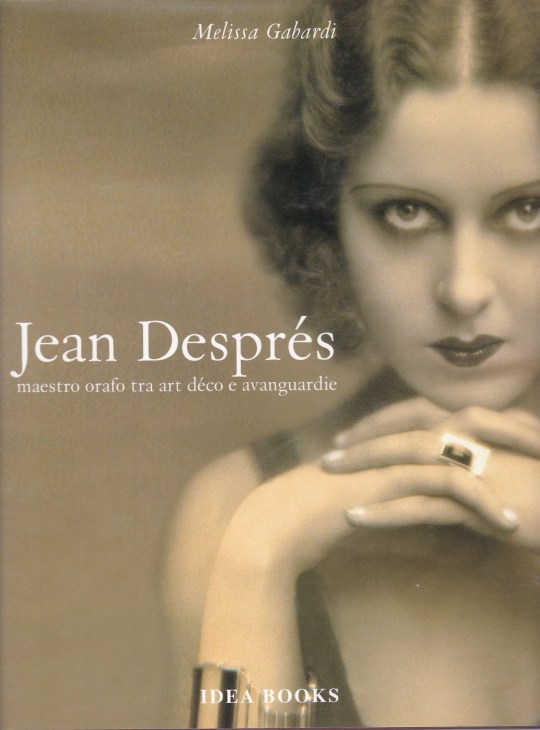


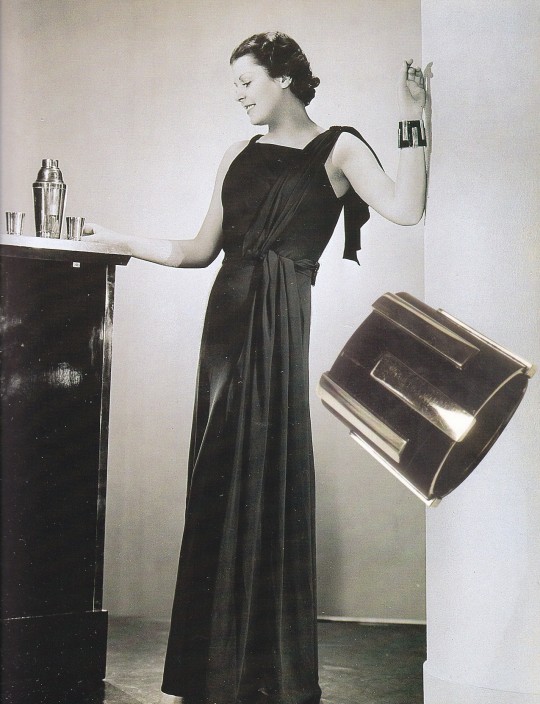
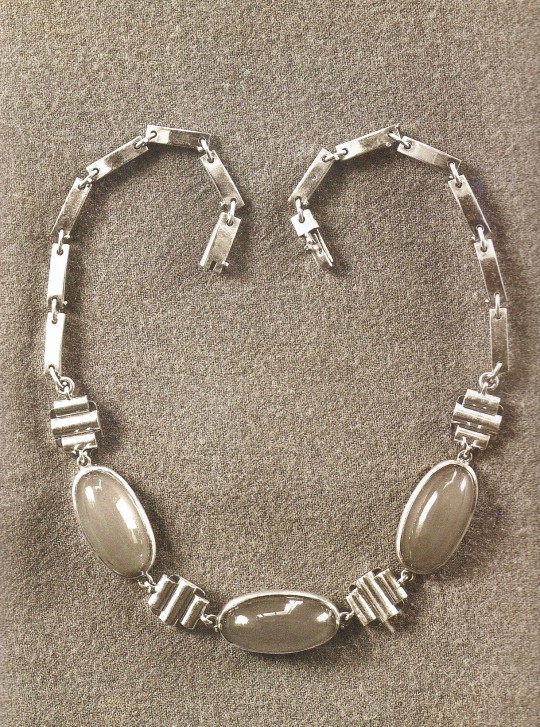





Jean Després
maestro orafo tra art déco e avanguardie
Melissa Gabardi
Idea Books, Milano 2000, 208 pagine, 23.8 x 29.4 cm, ISBN 978-8870171358
euro 120,00
email if you want to buy :[email protected]
Il libro è una monografia dedicata all'opera di Jean Després (1889-1980) creatore francese di monili e oggetti di oreficeria, attivo in piena stagione Art Déco.
A definitive celebration of the work of this noted Art Deco designer.
Jean Després (1889–1980) was an Art Deco designer who captured the streamlined, modern aesthetic of the age of the machine and transformed it into objects of great beauty.
As a young man, Després became acquainted with avant-garde artists in Paris, including Modigliani, de Chirico, and Braque, and, after the outbreak of war in 1914, he worked on the industrial design of airplanes. He later transferred this experience and inspiration to his family’s jewelry business, where he became known for his innovative geometric patterns. He also created a wide range of tableware and decorative objects in gold, silver, and pewter, whose bold, industrial looks were uncompromisingly modern, yet always graceful and refined.
Many drawings and designs are reproduced here for the first time, and original photographs are complemented by a number of new photographs taken especially for the book. Després has always been the jeweler of choice for informed collectors and insiders: Josephine Baker was an early admirer, and Andy Warhol’s personal collection was sold at Sotheby’s New York in 1988. This splendidly illustrated survey of his work will delight new admirers and connoisseurs alike.
12/09/22
orders to: [email protected]
ordini a: [email protected]
twitter: @fashionbooksmi
instagram: fashionbooksmilano, designbooksmilano tumblr: fashionbooksmilano, designbooksmilano
#Jean Després#Melissa Gabardi#maestro orafo#Art Déco#bijoutier#orfèvre#machine age#jewelry books#fashionbooksmilano
21 notes
·
View notes
Photo

Broches "Hera", "Circé" et "Asteria" de Georges Braque (1960-63) et "Collier" (détail) de Julio Gonzales (1933-40) présentés à l'exposition “Ornamentum : Bijoux d'Artistes | Collection Diane Venet” de la Fondation Boghossian dans la Villa Empain, Bruxelles, mai 2023.
2 notes
·
View notes
Text
James Mayor on Robert Fraser
"I only really met Robert when he returned from India at the end of 1979. We became immediate friends and from then on in barely a day went by, when we were both in London, that we didn't either have a drink or a meal together. He adopted my wife and myself as his family; both his parents were practicing Christian Scientists, which Robert was most certainly not. When I came back to London in December 1972 to take over the gallery, there was a huge gap in the London Art scene left by the closure of Robert's gallery that I was able to try to fill. His 1983 reopening in Cork Street was welcomed by everybody with open arms.
One morning on my way to work I remember seeing Godfrey Pilkington on all fours trying to get into his gallery, Robert came up to me rather sheepishly to explain that he had been a bit miffed with Leslie Waddington and the night before, rather the worse for wear, he decided to fix Leslie's door with superglue. Unfortunately he got the wrong gallery. Sadly by the summer of 1985 his illness was really taking hold and he had to close his gallery. For the August Bank Holiday he really wanted to come to stay with us in Shropshire and have a chance to see his old friends locals to there. Paul and Linda McCartney arranged for somebody to bring him down and bring him back to London. He really rallied to the occasion much to everybody's great enjoyment. Sadly he collapsed on the way home and was never really the same afterwards. We had done a number of deals together and the final one, when he was basically bedridden, was when he sold Giorgio di Chirico's Nude, 1911-12, to one of his clients. It had originally belonged to René Gaffe who had an exhibition of works from his collection at the Zwemmer gallery in 1937. The show included major cubist works by Picasso and Braque as well as a few di Chiricos. At the end nothing had sold so Roland Penrose bought the lot including this painting. We got it by exchanging it for a di Chirico Still Life that we had bought from the Edward James Foundation with Mario Tazzoli. Robert was very much a Robert, never a Bob let alone 'Groovy Bob'. He was an inspiration, a life enhancer and a true friend and I miss him to this day. How Robert would have enjoyed his funeral as one of the mourners came by helicopter and his pilot not having been to the South London Crematorium before thought that he had found the perfect landing spot, only to discover too late that it was a sewage farm!"
—Stories from the Mayor Gallery 1986
And:
"At the 2012 Combine retrospective in Paris I was amused to see a film by Bryan [Robertson] and Bob [Rauschenberg] at the 1964 Whitechapel show, both smoking as they hung the show; two really sweet, really handsome, young men – what a loss to women, those two! You only needed Robert Fraser there and you would have had a mass suicide of desperate women, all three being gay!"
—Stories from the Mayor Gallery 1973
10 notes
·
View notes
Text
Research: Picasso



•Pablo Ruiz Picasso was a Spanish painter, sculptor, printmaker, ceramicist, and theatre designer.
•Picasso is often associated with the development of abstract art, although his relationship with abstraction is nuanced and evolved.
•Picasso, a co-founder of cubism, revolutionised the art world by breaking down objects into geometric shapes and depicting them from multiple perspectives simultaneously. This fragmentation of form laid the groundwork for abstract art, even though Picasso himself never fully embraced non-representational abstraction.
•Picasso, alongside Georges Braque, developed Cubism in the early 20th century. This movement can be seen as a precursor to full abstraction because it challenged traditional perspectives and representation. In Cubism, objects are deconstructed and reassembled in an abstract form, highlighting the use of geometric shapes and the reduction of natural forms into their essential structures.
•Analytical Cubism (1907-1912): In this phase, Picasso focused on breaking down objects into their basic geometric components and depicting them from multiple angles. This analytical approach led to compositions that were abstract in their disregard for realistic representation.
•Synthetic Cubism (1912-1919): This phase introduced collage elements and brighter colors. Picasso's works became more abstract as he incorporated different materials and textures, emphasizing the flatness of the canvas and the constructed nature of art.
•Inspired by Picasso's Cubist style, I explore the deconstruction of forms in my cling film paintings. By breaking down images into their fundamental shapes and reconstructing them on an unconventional medium, I aim to capture the essence of my subjects in a way that transcends traditional representation.
•Picasso's ability to convey deep emotions through abstract forms resonates with my intent to express complex mental health experiences. His work teaches me that abstraction can be a powerful tool for communicating inner turmoil and psychological states, which I strive to achieve in my art.
0 notes
Link
0 notes